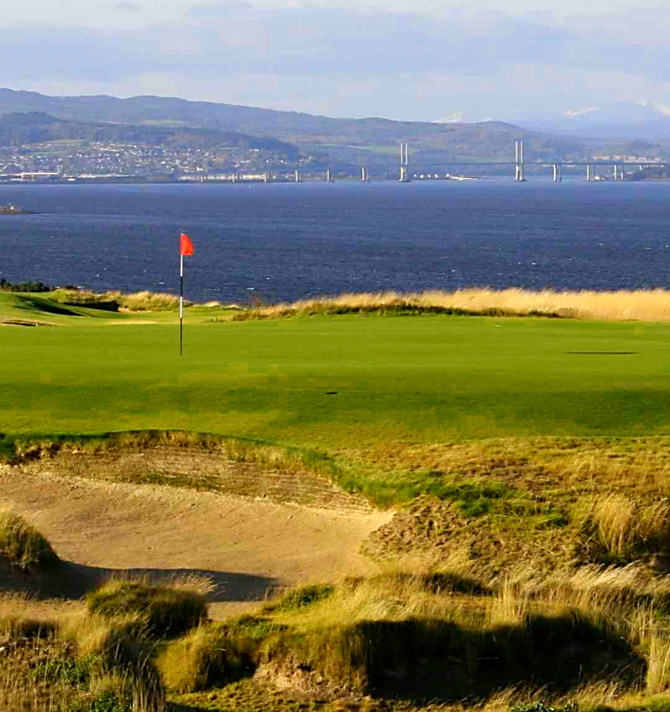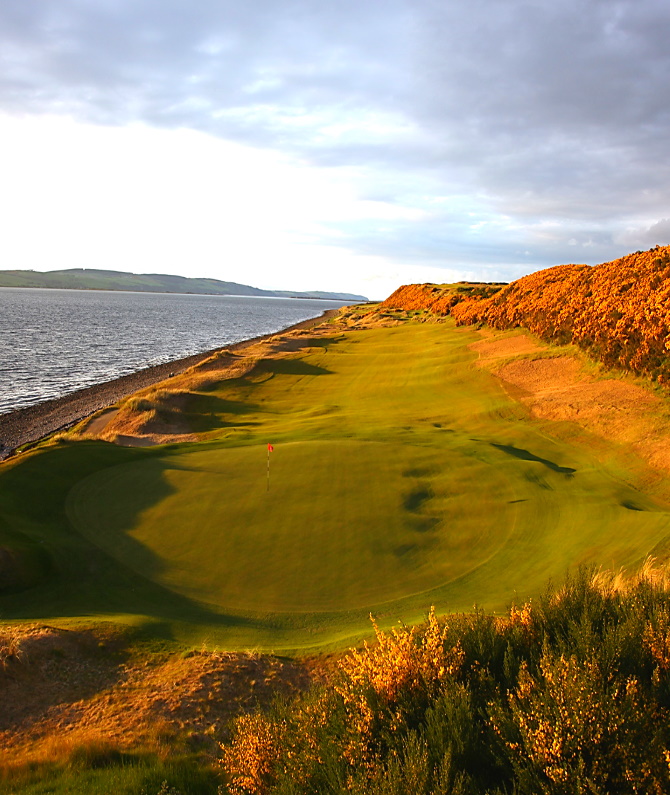
Castle Stuart is on the shores of the Moray Firth. It plays on a headland with upper and lower tiers, and consequently has high elevation tee-shots to targets below as you transfer between the two. The design philosophy stressed enhancing the natural landscape rather than manufacturing an artificial one, so copious ‘waste’ bunkers abound along with infinity greens that run into the water.
Castle Stuart needn’t be a punitive lay-out. Golfers have deliberately been given a chance to recover an error rather than clobbered for it, but you might need to improvise a bit
This is a drivable par 4 under most conditions, and sometimes makes these composite best 18 holes courses. The green is long and narrow (some 14 paces wide) and slightly sloping rightward toward the sea. Recoveries from left of the green are quite testy although one can putt, chip, or wedge it from the unevenly ‘rumpled’ and tightly mown fairway cut. But whatever the decision on the tee, try and take the bunkers out of play with the first shot and remember how testing the lie, stance, and angle can be from left of the green

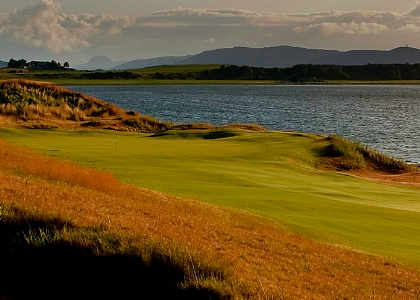
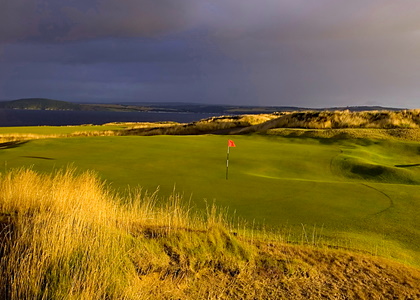
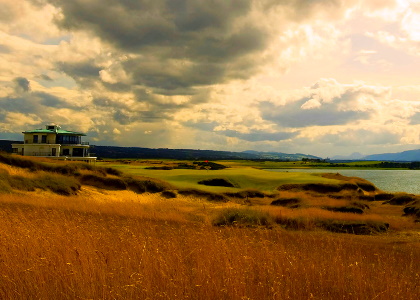

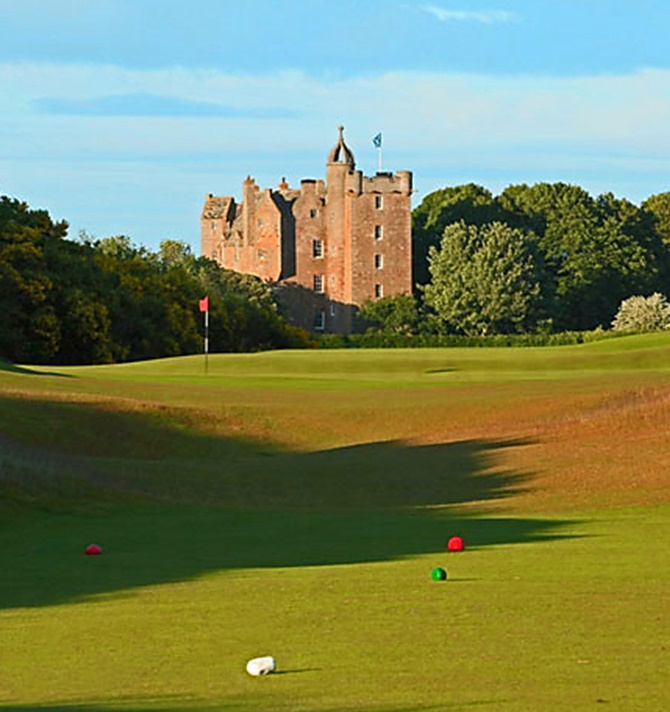
The fourth has something of an air of a hole built around a vista about it as you line up a par 3 played directly at the castle itself. There are three ways to get your ball onto this mid-length par 3 green:
1) a shot meant to land short on the high left fairway plateau can release the ball down and to the right onto the front left
2) a shot with enough spin can land and ‘grow teeth’ as it sits down on
3) a releasing shot can find the 30 yard long and virtually invisible fairway plateau fronting the green.
Let the wind conditions, pin placement, and preferred shot shape govern your thought process
Downwind this par 4 is close to being drivable for many players, but the line needs to on the fairway right of the green, where the contours plus a little right-to-left ball might bring you onto the back portion of the green. Less than solid strikes that leave the ball in the fairway hollow short and right of the green result in awkward and blind low-to-high shots to a less-than-receptive green. Tee balls struck solidly directly at the green bring the largely hidden and intruding finger of the left-side ‘open sandy area’ into play.
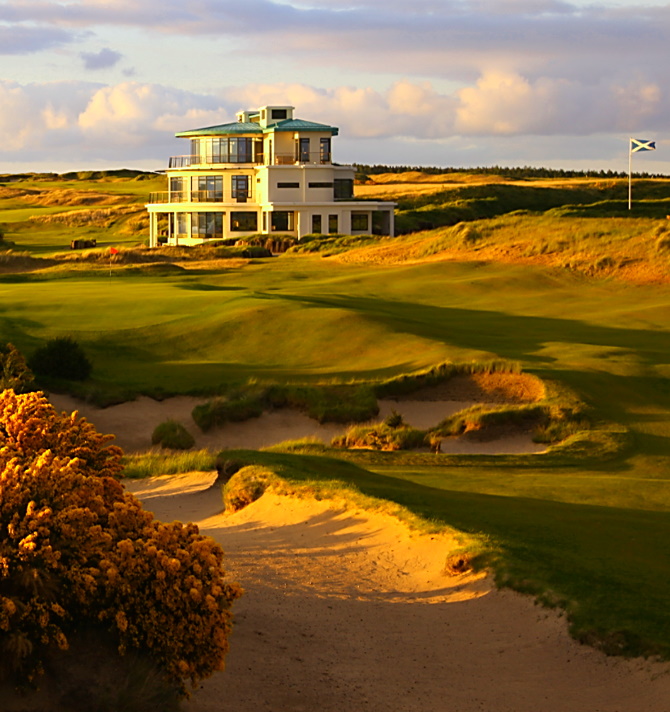


It’s worth name-checking the previous hole (10th) which involved launching am inspiring drive from an elevated tee down on to the bottom tier, for the 11th marks the beginning of a run of shoreline line holes on the lower tier
Long and left is not good. Nor is long and right. So for those low handicappers playing mid-to-back pin locations, don’t go ‘over the top’ or ‘push’ your shot. The result can be rather wet. For those of more modest ambition, short and right is a very manageable recovery area. Putting up and through the greenside contours will yield many a par save. Maybe this ‘shorty’ is a wee bit harder, relatively speaking, for more easily seduced better players than for the rest. Enjoy the view of Chanonry Lighthouse and the firth beyond the green on this hole that exudes intimacy with the sea.
The closing trio of holes at Castle Stuart are compassionate beginning with this drivable par 4. If you’re behind coming to the 16th tee you can still turn things round. Having a go for it on 16 isn’t a bad idea. Something disastrous can happen but it’s not likely. A weak drive to the left off the tee leaves a difficult angle across a deep fairway hollow fronting the green. Long and right might find either a bunker or some heather from which recoveries can be made. Through the green and beyond are hidden ‘saving’ bunkers. Weak and right can leave a very manageable set of options for getting close – wedge it, chip it, and yes even putt it; Take note of the green’s infinity edge with nothing beyond but the sea and Fort George
